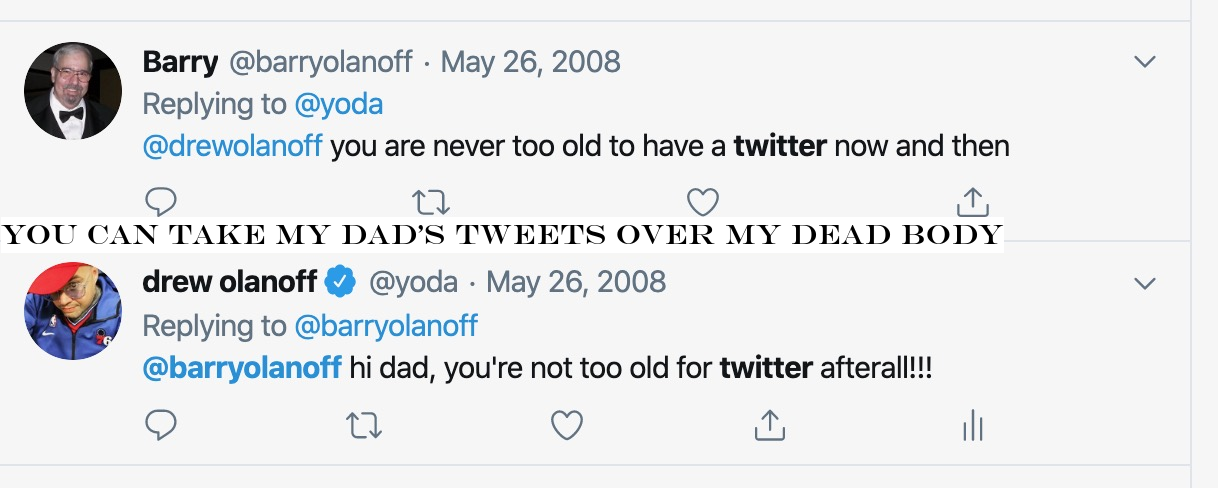Technology
Nico Berardi considers himself to be a citizen of the world, with a penchant for travel and a wide range of interests. Unlike many other VCs, who&ve increasingly specialized as the market has grown more crowded, Berardi is nearly as wide-ranging in his approach to venture capital, too.
Somewhat counterintuitively, itpaying off. At least, Berardiventure firm, Animo Ventures, has been investing a $60 million debut vehicle since closing it in July of last year.
Itan impressive, surprising, amount for someone raising a fund for the first time, but then, Berarditrajectory into the world of venture capital hasn&t been completely straightforward, either. To wit, Berardi grew up in Argentina, where his professional life began at a community-focused nonprofit Techo, a kind of Habitat for Humanity focused on Latin America. He was so good at his development job, in fact, that he was moved to Miami as the CEO of TechoU.S operations.
It was there, over his six year career with the organization, that he was first introduced to the world of investing. Specifically, encouraged by several board members who were angel investors — and aided by some backing from the Knight Foundation — Berardi left the nonprofit world in 2014 to launch a still-active angel investor group called Miami Angels that funnels around $3.5 million into roughly 10 local companies each year.
In quick succession, he then applied to and was accepted into the tuition-based Kauffman Fellows Program, fell in love with a medical student in Boston, and headed to Harvard Business School to be closer to her, spending his summers with the Boston and San Francisco-based early-stage venture firm Resolute Ventures.
He imagined he&d land in San Francisco afterward, to work with Resolute. But when that medical student — now his wife — wound up landing a job back in Miami, he headed there instead and decided to launch his own venture firm. Enter Animo, a Latin word that means with intention or purpose and also, notes Bernardi, &sounds international.&
The latter matters because while Berardi is the sole general partner of the firm, herunning it with two colleagues, neither of whom lives in the U.S. One of these is partner Antonio Osio, a native Mexican who was running his own firm, Capital Invent, when he first met Berardi through Kauffman Fellows. (&I poached him,& says Berardi.) They also have an operations partner in Caro Acevedo, who worked with Berardi as his COO at Techo and who still lives in Argentina.
As for the money, Berardi says it &mostly comes from Latin America and Europe,& including from anchor investor Techint. Ita 60,000-person Argentine conglomerate that owns steel, construction, oil, gas, and healthcare businesses around the world and whose CEO, Paulo Rocco, sees Animo as a way to put the companyresources into new materials sciences, manufacturing technology, and machine learning startups, says Berardi.
&We want to make a dent in the universe, and there aren&t a lot of Latinx investors around and we want to carry that flag,& he offers.
To date, Animo has announced 12 deals, all in the U.S., including six investments in New York and six others in other places, including Scottsdale, Az.; Toronto, Ontario; Miami; and Richmond, Va.
Notably, Animo does not have plans to invest in Latin American companies, though it has backed a number of Latin American founders in the U.S. &I think every investor has their own set of biases,& says Berardi. &Our diversity numbers point in that way, but it hasn&t been a conscious effort. Thatjust who we are.& He suggests that a much bigger focus for the firm is using its connections in &tier one ecosystems& like San Francisco and New York to &help [founders] outside the bubble enter it.&
Berardi does say there are a few things Animo won&t consider. &We stay away from FDA-regulated stuff because we don&t understand it well enough and therefore can&t be useful.& Mostly, however, heopen to anyone and everyone who appreciates hard work, he suggests. &We&re younger, we&re hungry. We work 100-hour weeks and travel like crazy people.&
To underscore his point, Berardi tells a story about Intello, a SaaS operations platform that helps companies manage their SaaS spend, usage and compliance data and an Animo portfolio company. The startup had rented a booth at a conference organized by Okta, the publicly traded identity and access management company. &They didn&t have enough people to man the booth,& says Berardi, &and I was in town, so I was like, ‘I&ll man the booth with you in a cloud suit.& They thought I was joking and I made an idiot of myself, but it drew a lot of people to the booth.&
Pictured above from left to right, Animo founders Nico Berardi, Caro Acevedo, and Antonio Osio.
- Details
- Category: Technology
Editornote:Drew is a geek who first worked at AOL when he was 16 years old and went on to become a senior writer at TechCrunch. He is now the VP of Communications for venture equity fund Scaleworks.
There are a few ways that people use Twitter, but for the most part the ones who have pushed the social platform into the national lexicon are regular users who like to communicate with each other using the thing. They&re the ones who use it a lot. They&re the ones who make Twitter go.
Now, mind you, I&m an extreme case. I share a lot. I&ve shared my cancer diagnoses, my stem cell treatment, new jobs, my wedding. And the loss of my father Barry.
Today, Twitter announced that it will reclaim dormant accounts. That is, if you haven&t logged into yours for a long time, it is considered inactive and will be included in the reclamation process.
At first I thought that was pretty cool. There are a ton of accounts that get squatted on, forcing new users to use crappy AOL-like names, such as Joe583822. No fun at all. And these accounts aren&t even in use! As in not active.
No big deal.
But then I saw this:
My heart sank. And I cried. You see, I didn&t think about this.Itisa big deal.
My fatherTwitter accountisn&t active.He passed away over four years ago. My Dad was a casual tweeter at best. He mostly used it because I, well, overused it. And it was charming. Once in a while he&d chime in with a zinger of a tweet and I&d share it humbly with the folks who kindly follow me.
He got a kick out of that, and so did I. I still do. I still read his tweets, and from time to time I still share them with you. Itmy way, odd or not, of remembering him. Keeping his spirit alive. His tweets are timestamped moments that he shared with the world.
And Twitter is sweeping them up like crumpled-up paper and junk in a dustbin.
Surely, my father isn&t the only person who has passed away and left a Twitter account unkept — or, as the company puts it, &inactive.& I can think of a few others. And I get even more upset at the thought of their thoughts disappearing. I might not remember everyone we&ve lost, but not being able to recall something they&ve said or shared in the past is depressing.
When people ask me why I use Twitter so much, itmostly because I see the platform as a living organism. Itnot perfect. In fact, itawful sometimes. Lately, a lot of times.
During events and during holidays italmost as if that tiny little app on my phone has a pulse. And a heart. Because of course it does: Itfull of human beings with feelings and real thoughts. Thatwhat makes Twitter Twitter.
And just because someonepulse no longer beats doesn&t mean their thoughts no longer matter.
I sincerely hope that Twitter didn&t think about this first and reverse course. Perhaps they&ll offer a way to memorialize an account. I don&t have my dadlogin. I can&t &wake up& his account to keep it safe. I am truly sad at the thought of losing some of his quirky nerdy tweets.
Especially this one:
My dad thoughtI was the only person on the damn site and I never corrected him or schooled him on Twitter. He used it the way he wanted to, and that reminds me of the person he was. If you take that away from me, then what is Twitter anyway?
Facebook allows you to memorialize someonepage and thatpretty great. Unfortunately, my fatherpage was deactivated and deleted without my having been consulted. By the time I realized it was gone, Facebook told me there was nothing it could do. It was really traumatizing for me and my other family members. So many interactions there, thoughts, smiles. A timeline. No, a time capsule.
Just gone. Like my dad.

Big tech companies are good at a lot of things, but what they seem to lack is collective empathy and heart. When humans use the things you build and you stop treating them like humans, but rather like bits and bytes and revenue dollars, you&ve given your soul away. And maybe itjust me getting older, but I&ve had about enough of it.
To quote the late great Barry Olanoff:
Think about it, Twitter. Do better. Because every time you make me question your humanity, I&m one step closer to not being that whale of a user that helped get you here in the first place.
- Details
- Category: Technology
Read more: You can take my Dad’s tweets over my dead body
Write comment (99 Comments)
Netflix is expanding its theatrical presence by signing a long-term lease for The Paris Theatre, a historic single-screen venue in New York City.
This follows reports that Netflix is also working to buy the Egyptian Theatre in Los Angeles. And while these might seem like odd moves for a streaming company, they may also be necessary if Netflix wants to continue working with high-profile filmmakers like Martin Scorsese and Noah Baumbach.
After all, although Scorseselatest film &The Irishman& and Baumbach&Marriage Story& are both playing in theaters, they&re appearing on a limited number of screens.
In the case of &The Irishman,& Netflix reportedly hoped for a bigger rollout but failed to get the major theatrical chains on-board because the company would only wait four weeks (shorter than the traditional window of theatrical exclusivity) before launching the movie online.
Despite its deep pockets, Netflixtheatrical challenges could dissuade other Scorsese-caliber filmmakers from signing with the service, particularly if the issue hurts the chances that &The Irishman& and &Marriage Story& (and last year&Roma,& which won three Oscars but lost out for Best Picture) will be able to win major awards.
So by buying or leasing theaters of its own, Netflix can ensure that its films will get the cachet of a big-screen release. It can also host glitzy premieres and other events.
As for the Paris Theatre, it opened in 1948, and reopened earlier this month to screen &Marriage Story.& (By the way: I highly recommend seeing &Marriage Story& on the big screen — I&ve already done so twice.)
&After 71 years, the Paris Theatre has an enduring legacy, and remains the destination for a one-of-a kind movie-going experience,& said Chief Content Officer Ted Sarandos in a statement. &We are incredibly proud to preserve this historic New York institution so it can continue to be a cinematic home for film lovers.&
- Details
- Category: Technology
Read more: Netflix leases New York’s Paris Theatre
Write comment (93 Comments)Itstrange that no matter how hard Amazon denies that its warehouses are terrible, dangerous places to work, the reports to that effect just keep coming out. Not only that, but now a whistleblower alleges the company worked with Indiana officials to erase a workplace safety violation that cost a man his life.
Reveal News reports the whistlebloweraccount of Phillip Lee Terrydeath in 2017 and the subsequent efforts to shift blame from Amazon to the deceased. The full report is worth reading; it implicates Amazon, the head of IndianaOccupational Safety and Health Administration (OSHA), and even the governor.
The short version is this: Terry died on the job in a forklift accident. An investigation conducted by the whistleblower, John Stallone, found that Amazon had failed to provide adequate safety training. Citations were issued and $28,000 in fines proposed. But Stalloneboss, IOSHAdirector, directly contacted Amazon and discussed how they might reduce those fines and place the blame on Terry.
Stallone knows this because he was in the room and recorded the conversation, which Reveal News listened to. Amazon told TechCrunch that it &worked directly with [IOSHA] during the inspection and in follow-up discussions to provide Mr. Terrytraining records.& When I asked directly whether the company disputed Stalloneaccount of the call, the representative suggested I contact the Indiana state government instead.
A few days later, Stallone said, he was called into the office of IndianaLabor Commissioner, Rick Ruble, and found the governor, Eric Holcomb, there as well. He was told to stop pursuing the case, according to Stalloneaccount, because of — you guessed it — Indianaaspirations to host AmazonHQ2.
Stallone soon quit, and a year later, the fines were reversed and all four safety violations were struck from the record. Instead it is listed as an &unpreventable employee misconduct,& meaning Terry was legally responsible for his own death — counter to the conclusions of the investigation, which had Terrycoworker on the record stating Amazon had failed to provide proper training.

Governor Holcomb retaliated with a statement denying any involvement with a Labor Department case, denying he ever had the meeting Stallone describes, called the allegations &fabricated& and the report &irresponsible and deliberately misleading… heinous lies.&
Ithard to imagine why Stallone would fabricate such a meeting, when other efforts by state officials to quash these violations and fines are on record. It has not yet been shown beyond the two competing claims whether the meeting indeed took place, but presumably it was informal anyway, which provides the governor plausible deniability.
This would all be harder to believe if we hadn&t seen the frenzy of servility AmazonHQ2 announcement provoked nationwide. Or if the allegations of poor working conditions at Amazon warehouses hadn&t continued to pile up in the meantime. Revealinvestigations related to the whistleblowercase show an alarmingly high number of injuries at Amazonfacilities.
In a statement, Amazon said that it takes &an aggressive stance on recording injuries no matter how big or small,& leading to higher numbers than other, similar work environments. As usual, workers at the warehouses dispute Amazonaccount, recalling systematic efforts to under-report and increases in injuries coming from automation.
One thing is certain: Ordering from Amazon during the holidays adds pressure to a warehouse system that by many accounts is already operating at superhuman levels — with very human costs. Perhaps shopping local is a better move this year.
- Details
- Category: Technology
Jason Sherman, founder and CEO of TapRm (pronounced &taproom&), says ittime for beer-lovers to do more of their shopping online.
Itan industry that Sherman knows well, having worked as an attorney at Anheuser Busch and at the alcohol giantZX Ventures incubator. He said it was through the job that he began wondering why only 0.2% of beer purchases take place online.
The answer, he suggested, is fundamentally regulatory, with different rules in different states, but each of them adhering to some form of the three-tier system —where alcohol is produced by one group of businesses, distributed by another group and finally sold to consumers by a third. That means a brewery could get into legal trouble for selling its beer online.
Sherman said his startup TapRm — which has raised $1.5 million in funding — accommodates these rules by &finding unique licenses that have existed and [bringing] certain licenses together,& ultimately allowing it to find &legal ways to combine those tiers.&
In other words, TapRm is able to serve as both distributor and retailer. So it works with breweries to sell their beer to more than 600 bars, restaurants and supermarkets, but it also allows them to sell their beer directly to consumers, via branded websites. In fact, Sherman said TapRm rewards breweries for prioritizing online sales.

Jason Sherman
&We give back a portion of all sales for everything they sell online, so they have an incentive to push traffic to their … site,& he said. &Ifyou sell through TapRm, you get back $2 to $8 on every case, depending on your volume.&
Sherman acknowledged that as a consumer, you may be perfectly happy to &go down the road to get your Corona or your Heineken any day of the week& — and if so, there may not be any reason for you to buy from TapRm. But if you&re a fan of a brewery that you can&t find in stores, or if you&re you&re simply &tired of having to rely on whaton the shelf& and you want to try something new, then online purchases could be your best bet.
That focus on enabling craft breweries to sell to consumers, rather than simply serving as a delivery system for brick-and-mortar liquor stores, is also what distinguishes TapRm from startups like Drizly.
In addition, the company operates an online marketplace of its own and provides beer recommendations across its different online storefronts. When I wondered whether any customers were concerned about the startup promoting competing breweries, Sherman said he hasn&t gotten any complaints, because breweries see the TapRm marketplace as &another retail outlet.&
He added, &We would never up-sell and cross-sell completely competitive products, ever.&
The startup currently delivers throughout New York state, with two-hour delivery in Brooklyn. Sherman said he remains focused on &building our footprint in New York City,& but he also plans to launch in three additional cities next year.
The funding was led by The Broe Group, with participation from VU Venture Partners, Branded Strategic Hospitality and others.
- Details
- Category: Technology
Read more: Beer-loving commerce startup TapRm raises $1.5M
Write comment (100 Comments)
How should a growth company manage its budget? Does an annual budget approval process even make sense in a fast-moving firm?
My friends who are executives at large, established companies complain about how fixed budgets lead to gamesmanship. An executive who wastefully spends down their travel and expense budget at year-end to justify an equal or larger budget next year may also fail to take advantage of a great marketing opportunity with a December 31 deadline — because they spent their budget on T-E.
However, in a startup, the most common scenario is that projections get missed. Paul Bianco, CEO of Graphite Financial*, says &entrepreneurs are characteristically optimistic by nature and often present their board best-case-scenario budgets and projections. Inevitably, things cost more and take longer than expected. I encourage entrepreneurs to correct course with a re-forecast early and often. The worst thing you can do is dig in your heels and hope things will miraculously get better. Being transparent enough to say ‘look, we expected X to happen, but now we expect Y to happen, this is why, and this is what we&re doing about it& is an admirable trait.&
Herethe solution I have recommended to some of my portfolio companies: &agile budgeting,& i.e., monitoring a few key variables, while giving managers significant flexibility. Entrepreneur Jeff Magnusson provides a sample agile budgeting workbook. Sean Colrock, Director of Client Partnerships at Wiss - Company, suggests at a minimum you track: cash on hand; fume date, and burn rate. The next most important set of metrics are sales by category; working capital (cash and other current assets, less current liabilities); EBITA and gross margin. Ben Horowitz writes that you can ruin your company with a bad budgeting process and recommends a similar approach.
Regardless of whether you take a traditional or agile budgeting approach, Robert A. Howell, Professor of Business Administration at Tuck, writes that you should turn your budgeting process upside down by &reformat[ting] planning and budgeting templates to highlight cash rather than accounting net income.&
This agile approach is not restricted to small startups. In Stop Budgeting, Start Improving, Brad Power writes:
- Details
- Category: Technology
Read more: Use agile budgeting to manage your cash
Write comment (100 Comments)Page 249 of 5614

 9
9